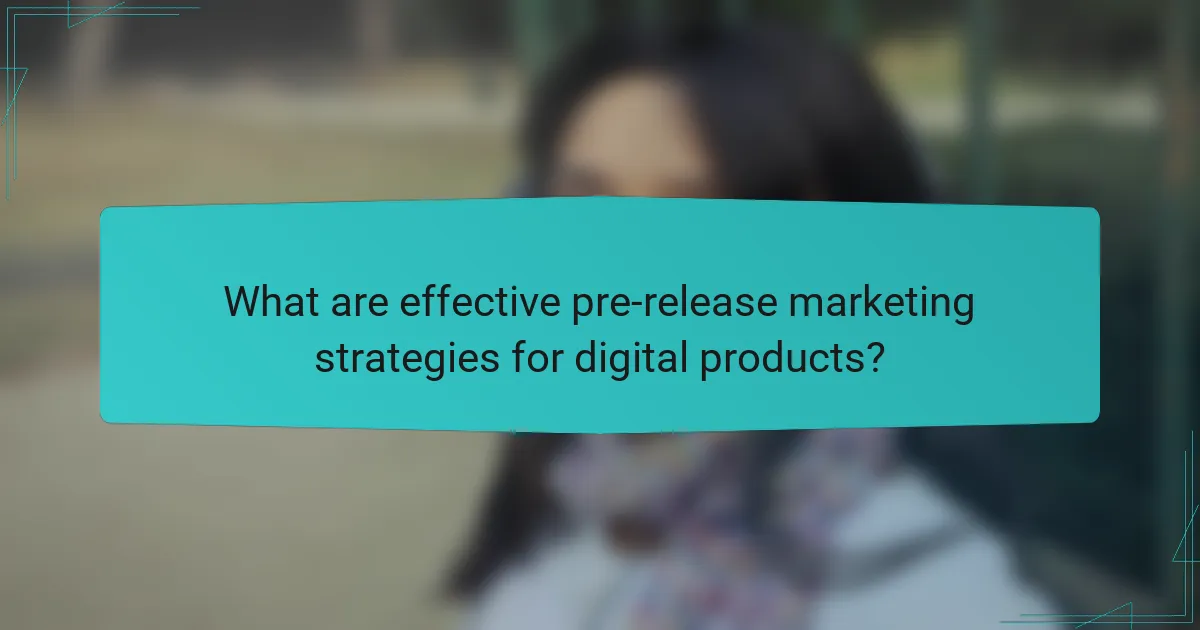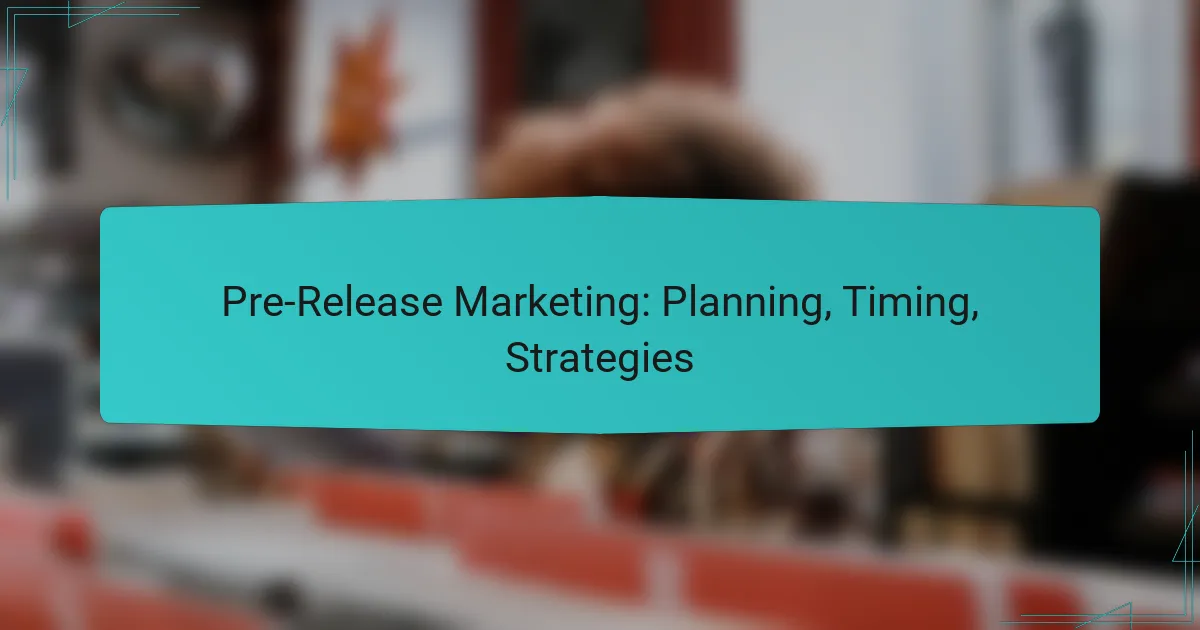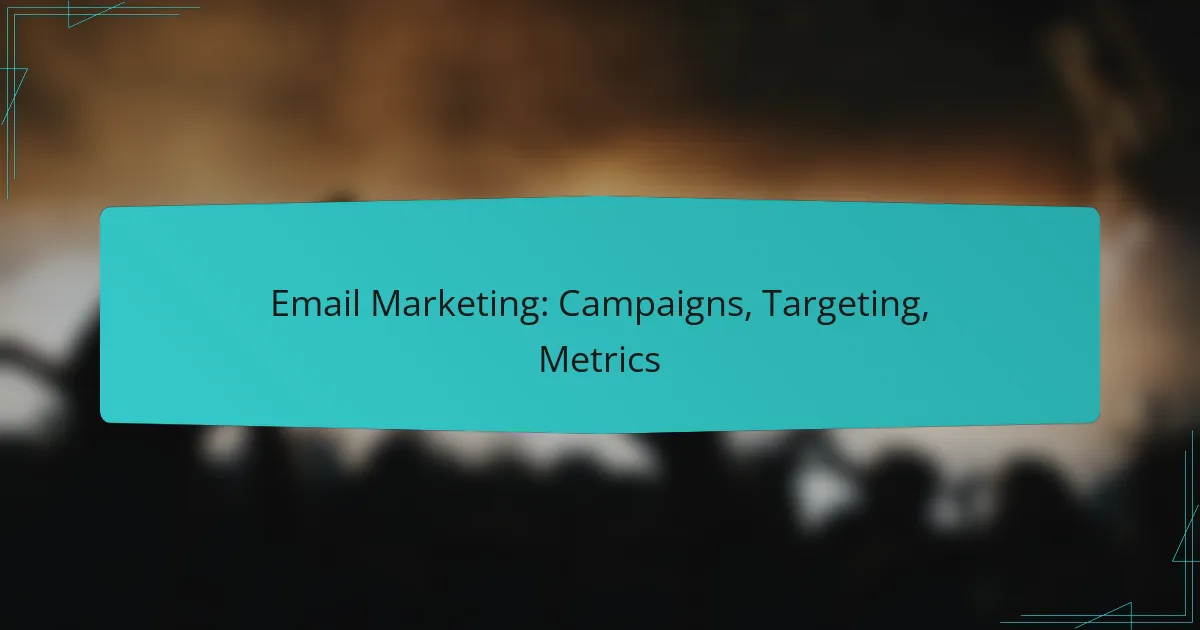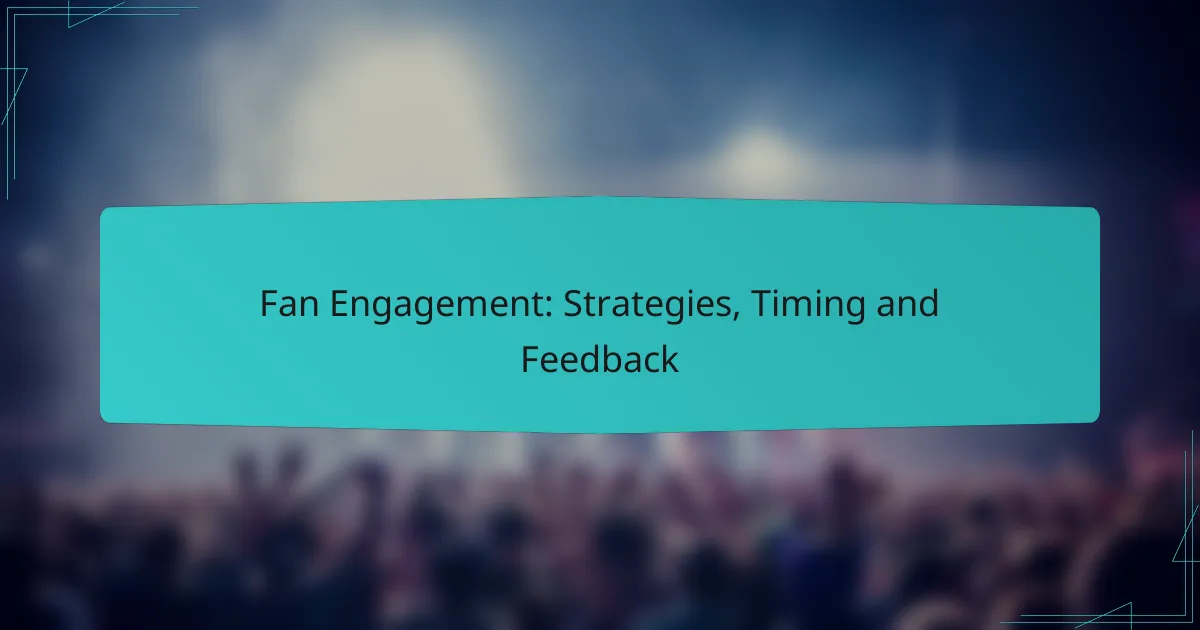Pre-release marketing is crucial for generating excitement and anticipation for your digital product before it hits the market. By starting your efforts 3 to 6 months in advance, you can effectively engage potential customers through various strategies such as social media, email campaigns, and influencer partnerships. A well-structured pre-release marketing plan tailored to your audience will help ensure a successful launch and maximize your product’s visibility.

What are effective pre-release marketing strategies for digital products?
Effective pre-release marketing strategies for digital products focus on building anticipation and engaging potential customers before launch. Key approaches include leveraging social media, email marketing, influencer partnerships, content marketing, and hosting webinars or live demos.
Social media campaigns
Social media campaigns are essential for generating buzz around your digital product. Utilize platforms like Facebook, Instagram, and Twitter to share teasers, behind-the-scenes content, and countdowns to the launch date.
Engage your audience with interactive posts, polls, and contests to foster community involvement. Consider using targeted ads to reach specific demographics that align with your product’s audience.
Email marketing
Email marketing is a powerful tool for nurturing leads and keeping potential customers informed. Build an email list by offering incentives such as exclusive content or early access to the product.
Craft a series of emails leading up to the launch, including sneak peeks, testimonials, and reminders about the release date. Ensure your emails are visually appealing and mobile-friendly to maximize engagement.
Influencer partnerships
Collaborating with influencers can significantly expand your reach and credibility. Identify influencers in your niche who resonate with your target audience and propose partnerships for product reviews or promotional content.
Consider offering them early access to your product or exclusive discounts for their followers. This can create authentic buzz and encourage their audience to engage with your brand.
Content marketing
Content marketing involves creating valuable content that informs and excites your audience about your upcoming product. Develop blog posts, videos, and infographics that highlight the product’s benefits and features.
Optimize your content for search engines to attract organic traffic. Share this content across various platforms to maximize visibility and establish your brand as an authority in your field.
Webinars and live demos
Hosting webinars and live demos allows you to showcase your digital product in real-time, providing potential customers with an interactive experience. Schedule these events close to your launch date to maintain interest and urgency.
Promote the webinars through your social media and email channels, and consider recording them for future use. This can serve as valuable content for those who missed the live event and can help convert leads into customers.

When is the best time to start pre-release marketing?
The best time to start pre-release marketing is typically 3 to 6 months before your product launch. This timeframe allows you to build awareness, generate interest, and create a buzz around your offering, ensuring a successful launch.
3-6 months before launch
Starting your pre-release marketing 3 to 6 months before launch gives you ample time to develop a comprehensive strategy. Focus on creating a strong brand narrative and identifying your target audience to tailor your messaging effectively.
During this period, consider leveraging social media, email campaigns, and content marketing to engage potential customers. Regular updates and sneak peeks can help maintain interest and encourage early sign-ups or pre-orders.
Key dates for product relevance
Identifying key dates relevant to your product can significantly enhance your marketing efforts. Consider industry events, holidays, or seasonal trends that align with your launch to maximize visibility.
For instance, if you’re launching a tech gadget, timing it around major tech conferences or back-to-school season can attract more attention. Create a calendar of these dates and plan your marketing activities to coincide with them for optimal impact.

How to create a pre-release marketing plan?
A pre-release marketing plan outlines the strategies and steps necessary to generate interest and excitement before launching a product. This plan should be tailored to your target audience and include clear objectives, budget allocations, and chosen marketing channels.
Define target audience
Identifying your target audience is crucial for effective pre-release marketing. Understand who your potential customers are by considering demographics, interests, and behaviors that align with your product.
Utilize tools like surveys, social media insights, and market research to gather data about your audience. This information will help you tailor your messaging and promotional strategies to resonate with them.
Set clear objectives
Establishing clear objectives is essential for measuring the success of your pre-release marketing efforts. Objectives should be specific, measurable, achievable, relevant, and time-bound (SMART).
For example, you might aim to achieve a certain number of sign-ups for a newsletter, generate a specific amount of social media engagement, or drive traffic to a landing page before the product launch. This clarity will guide your marketing activities and help assess their effectiveness.
Allocate budget
Budget allocation is a key component of your pre-release marketing plan. Determine how much you can invest in marketing activities, including advertising, content creation, and promotional events.
Consider allocating a percentage of your overall marketing budget specifically for pre-release efforts, typically ranging from 10% to 30%. Keep track of expenses to ensure you stay within budget while maximizing impact.
Choose marketing channels
Selecting the right marketing channels is vital for reaching your target audience effectively. Consider a mix of digital and traditional channels based on where your audience spends their time.
Common channels include social media platforms, email marketing, content marketing, and paid advertising. Each channel has its strengths, so evaluate which ones align best with your objectives and audience preferences to create a cohesive marketing strategy.

What are the key metrics for measuring pre-release marketing success?
Key metrics for measuring pre-release marketing success include engagement rates, lead generation, conversion rates, and return on investment (ROI). These metrics help assess the effectiveness of your marketing strategies and inform adjustments before the official launch.
Engagement rates
Engagement rates reflect how actively your audience interacts with your marketing content. This can include likes, shares, comments, and click-through rates across various platforms. A high engagement rate indicates that your messaging resonates with your target audience.
To effectively measure engagement, consider using tools like Google Analytics or social media insights. Aim for engagement rates above 2-3% for social media campaigns, as this is often considered a good benchmark.
Lead generation
Lead generation measures the number of potential customers who express interest in your product before its release. This can be tracked through sign-ups for newsletters, downloads of promotional content, or participation in webinars. A strong lead generation strategy can create a robust pipeline for sales post-launch.
Utilize landing pages with clear calls to action to enhance lead generation efforts. Aim for a conversion rate of at least 5-10% on these pages to ensure your pre-release marketing is effective.
Conversion rates
Conversion rates indicate the percentage of leads that take a desired action, such as making a purchase or signing up for a trial. This metric is crucial for understanding how well your pre-release marketing translates interest into tangible results. A higher conversion rate suggests that your messaging and offers are compelling.
Monitor conversion rates closely during pre-release campaigns. A typical range for conversion rates can vary widely, but aiming for 10-20% is a solid target for effective campaigns.
Return on investment
Return on investment (ROI) measures the profitability of your marketing efforts relative to their costs. Calculating ROI helps determine whether your pre-release marketing strategies are financially viable. A positive ROI indicates that your marketing investments are yielding profitable returns.
To calculate ROI, use the formula: (Net Profit / Cost of Investment) x 100. Aiming for an ROI of at least 30% is advisable for pre-release campaigns to ensure sustainability and growth.

What are common pitfalls in pre-release marketing?
Common pitfalls in pre-release marketing include failing to understand the target audience, misjudging the timing of campaigns, and neglecting to follow up with potential customers. These mistakes can lead to wasted resources and missed opportunities for engagement.
Insufficient audience research
Insufficient audience research can severely hinder the effectiveness of pre-release marketing. Without a clear understanding of who the target audience is, marketers may create campaigns that do not resonate, resulting in low engagement and poor conversion rates.
To avoid this pitfall, conduct thorough market research using surveys, focus groups, and social media analytics. Aim to identify demographics, preferences, and pain points, which will help tailor your messaging and channels effectively.
Poor timing of campaigns
Poor timing of campaigns can lead to missed opportunities or oversaturation. Launching a campaign too early may result in a lack of interest, while launching too late can mean competing with other major releases.
Consider industry trends, seasonal factors, and competitor activity when planning your timeline. A good rule of thumb is to start marketing efforts at least a few weeks to a couple of months before the release date to build anticipation without overwhelming your audience.
Lack of follow-up
A lack of follow-up after initial marketing efforts can cause potential leads to go cold. Engaging with your audience post-campaign is crucial for maintaining interest and converting leads into customers.
Implement follow-up strategies such as email newsletters, targeted ads, and social media interactions. Regularly check in with your audience to gather feedback and keep them informed about updates, which can foster loyalty and encourage word-of-mouth promotion.

How can you leverage feedback during pre-release marketing?
Leveraging feedback during pre-release marketing is crucial for refining your product and ensuring it meets audience expectations. Engaging with potential customers can provide insights that shape your marketing strategies and product features.
Collecting Feedback Effectively
To collect feedback effectively, utilize surveys, social media polls, and beta testing groups. These methods allow you to gather diverse opinions and gauge interest levels. Aim for a sample size that reflects your target market, which could range from a few dozen to several hundred participants.
Analyzing Feedback
Once feedback is collected, analyze it for common themes and actionable insights. Look for patterns in responses that highlight strengths and weaknesses in your product or marketing approach. Tools like spreadsheets or specialized software can help organize and visualize this data for clearer decision-making.
Implementing Changes
Implementing changes based on feedback is essential for improving your offering. Prioritize adjustments that address the most significant concerns or desires expressed by your audience. This could involve modifying features, enhancing messaging, or adjusting pricing strategies to better align with customer expectations.
Communicating Updates
After making changes, communicate these updates back to your audience. Transparency builds trust and shows that you value their input. Use email newsletters, social media announcements, or blog posts to share how their feedback influenced your product development.



